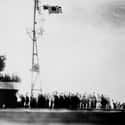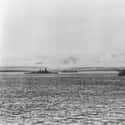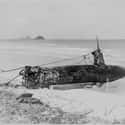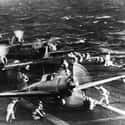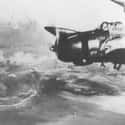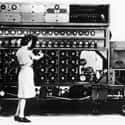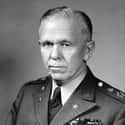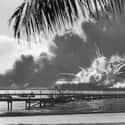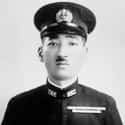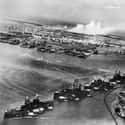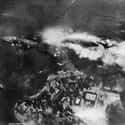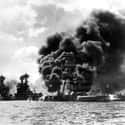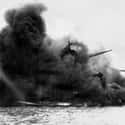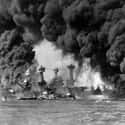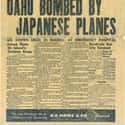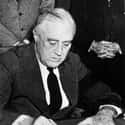-
(#1) 6:00 AM Japan Standard Time On November 26, 1941 - The Japanese Carrier Fleet Leaves Hitokappu Bay
On the morning of Wednesday, November 26, 1941, a massive Japanese fleet set off on a top-secret mission. At near freezing temperatures, the carrier fleet charted a route toward Hawaii through the empty northern Pacific Ocean.
For the next 12 days, the fleet would enforce radio silence, so no one saw the attack coming.
In Hawaii, 19 hours behind Japan, it was still November 25.
-
(#2) 3:42 AM On December 7, 1941 - The USS 'Condor' Spots A Japanese Submarine Near The Harbor
Hours before the Pearl Harbor strike, a US ship spotted a Japanese submarine near the harbor.
The USS Condor, a minesweeper, observed the submarine and even spotted a periscope. In response, officers on the Condor reported the sighting to another US destroyer.
-
(#3) 6:00 AM - The First Wave Of Japanese Planes Take Off From Aircraft Carriers
The Japanese spent months planning the Pearl Harbor strike. For 12 days, the Imperial fleet crossed the Pacific in silence. By the morning of December 7, 1941, the fleet took its final position 275 miles north of its target.
At 6 am, the first wave of Japanese planes took off. The air attackers included fighter aircraft, dive bombers, and torpedo bombers.
Commander Mitsuo Fuchida led the first wave. As he later recalled:
One hour and 40 minutes after leaving the carriers I knew that we should be nearing our goal. Small openings in the thick cloud cover afforded occasional glimpses of the ocean, as I strained my eyes for the first sight of land. Suddenly a long white line of breaking surf appeared directly beneath my plane. It was the northern shore of Oahu.
-
(#4) 6:45 AM - The USS 'Ward' Sinks The Japanese Submarine
While the first Japanese bombers were in the air, on their way toward Pearl Harbor, the USS Ward targeted the Japanese submarine spotted a few hours earlier.
At 6:45 am, the Ward found and sank the submarine, marking the first casualty of the strike. The US sailors still didn't realize the extent of the surprise attack when they sank the submarine.
-
(#5) 7:00 AM - The Second Wave Of Japanese Planes Take Off From Aircraft Carriers
Choppy water nearly doomed Japan's plan to strike Pearl Harbor. “The carriers were rolling considerably, pitching and yawing,” recalls pilot Tokuji Iizuka.
Iizuka left the IJN Akagi around 7 am with the second wave of planes. It took two hours for the attackers to fly to Oahu, where the Pearl Harbor strike was already in progress.
-
(#6) 7:02 AM - The Opana Mobile Radar Station On Oahu Observes Incoming Fighters
The first wave of Japanese fighters had now been in the air for two hours. Just after 7 am, Americans spotted the planes from the Opana Mobile Radar Station. Run by the Army, the radar station on Oahu served as an early warning system.
Yet when the radar operators called Fort Shafter to report the unusual reading, they were told to wait for a return phone call from a commanding officer before doing anything.
-
(#7) 7:20 AM - Fort Shafter Responds To Radar Report, But Believes It To Be A Fleet Of US B-17 Flying Fortress Bombers
The officer at Fort Shafter finally responded to the Opana Radar sighting of Japanese planes. However, the officer dismissed the blip as an incoming group of US B-17 bombers flying in from California. The Flying Fortress bombers were scheduled to arrive that morning.
In response, the lieutenant who phoned back the Opana operator said, "Don't worry about it."
-
(#8) 7:33 AM - American Codebreakers Decipher A Japanese Code Advising Japanese Negotiators To Cease Talking To US Officials
Just minutes before the first bombs dropped, the US deciphered a critical Japanese code.
Codebreakers learned at 7:33 am Hawaii Standard Time (HST) that the Japanese negotiators were told to stop all talks with the US. When military officers saw the deciphered code, they quickly concluded the Japanese might soon strike.
-
(#9) 7:33 AM - General George C. Marshall Sends Warning To Hawaii Through Commercial Telegraph
As soon as codebreakers learned the Japanese had cut off talks with the US, General George C. Marshall contacted Hawaii.
Marshall believed the report showed clear evidence that the Japanese were moving toward war. But Marshall sent this information via commercial telegraph - and it arrived too late.
-
(#10) 7:49 AM - Commander Fuchida Orders The First Wave Of Fighters And Bombers To Attack
Minutes before 8 am HST, Commander Fuchida gave the order for the first wave of planes to strike their targets.
Fuchida later wrote, "It was 0749 when I ordered my radioman to send the command, 'Attack!' He immediately began tapping out the pre-arranged code signal."
The early targets included airfields on Oahu in an attempt to block a US response. But the bombs also fell on the US fleet moored in the harbor.
-
(#11) 7:53 AM - Fuchida Signals 'To Ra, To Ra, To Ra'
From the Japanese side, the Pearl Harbor strike began at 5 am on December 7, 1941, when the first planes took off from the Japanese fleet. For hours, the planes flew toward the US naval base carrying destructive devices.
For nearly two hours, the United States did not realize the strike had already started.
At 7:53 am, minutes before the first bombs dropped, Japanese commander Fuchida signaled "to ra, to ra, to ra" to his ship. The signal communicated the success of the strike so far - the planes had arrived at Oahu without being spotted, and the strike would commence as a total surprise to the Americans.
-
(#12) 7:55 AM - Commander Logan Ramsey Makes The First Sighting Of Japanese Fighters
From Ford Island, Commander Logan Ramsey saw a low-flying plane. At first, Ramsey thought he had spotted a drill being conducted by American forces - until he saw the plane drop an incendiary device.
Ramsey transmitted a telegraph message that read: "AIR RAID ON PEARL HARBOR X THIS IS NOT A DRILL."
At the same time, the first bombs struck their targets.
-
(#13) 7:55 AM - The First Bombs Strike Their Targets
As Japanese bombs began to strike their targets just before 8 am on December 7, 1941, American servicemen started to perish.
On the USS West Virginia, Jim Downing watched fellow sailors "being blown off the ship, come up out of the water, feel the oil on the their bodies... and they just became human torches."
-
(#14) 8:10 AM - The USS 'Arizona' Is Hit
A few minutes after 8 am on December 7, 1941, the Japanese fighters dropped the first bomb on the USS Arizona. The incendiary device hit the rear of the ship, bouncing off one of the gun turrets before exploding through three decks.
A second bomb struck close to the antiaircraft deck. Then a third hit on the port side. Three bombs - or maybe more - struck harmlessly in the water.
A fourth device hit the Arizona, detonating the powder stores and causing a massive explosion.
-
(#15) 8:12 AM - Admiral Husband E. Kimmel Radios His Offshore Fleet
Admiral Husband E. Kimmel walked out his door at 7:55 am on December 7, 1941. He watched as Japanese aircraft targeted the US fleet. Kimmel's neighbor said the admiral's face was "as white as the uniform he wore."
Minutes later at 8:12 am, Kimmel addressed the fleet over the radio. “Hostilities with Japan commenced with air raid on Pearl Harbor,” Kimmel announced, calling in his offshore fleet and reporting the strike to the Navy.
-
(#16) 8:19 AM - The USS 'Arizona' Begins To Sink
On the deck of the Arizona, sailors tried to man the antiaircraft guns while Japanese bombers strafed the deck with bullets.
Crewman John Anderson recalls thinking, "We can't sit here and wait for the ship to go down. We've got to do something."
But when a bomb struck the powder stores, the ship's hull split. The Arizona began to sink at 8:19 am.
-
(#17) 9:00 AM - The Second Wave Of War Planes Descend On Pearl Harbor
Over an hour into the Pearl Harbor strike, the second wave of Japanese fighters descended. The dive bombers in the second wave targeted the ships still floating in the harbor, while larger planes carrying torpedoes and bombs targeted the air bases.
As the dive bombers circled the ships, the rest of the planes dropped high-altitude incendiary devices onto the bases.
-
(#18) 9:55 AM - With The Attack Over, The Focus Shifts To Salvaging Ships And Saving Lives
Between the first bombs at 8 am and the final ones around 9:55 am, the Pearl Harbor air raid damaged all eight US battleships in the harbor. Multiple ships sank, taking sailors with them. The strike also wiped out 170 planes, as well as wounded or took the lives of more than 3,500 Americans.
As the Japanese planes withdrew, the focus shifted to recovering from one of the most devastating military attacks in history. In the harbor, ships continued to burn, and rescue efforts focused on saving lives.
-
(#19) 4:10 PM On December 8, 1941 - The US Declares War On Japan
On December 8, 1941, the US declared war on Japan.
In the Senate, the declaration received a unanimous vote, while one member of the House of Representatives voted no. Congresswoman Jeannette Rankin, the first woman elected to Congress, cast the only vote against war. In explaining her vote, Rankin said, “As a woman, I can’t go to war and I refuse to send anyone else.”
-
(#20) 3:05 PM On December 11, 1941 - President Franklin Roosevelt Declares War Against Germany
President Franklin Roosevelt learned of the Pearl Harbor attack on December 7, 1941, in the early afternoon. The next day at 7:30 am HST (12:30 pm in Washington, DC), Roosevelt gave a six-minute speech to Congress. The president declared that December 7, 1941, was "a date which will live in infamy." President Roosevelt made it official when he signed the declaration of war on the Empire of Japan.
On December 11, 1941, four days after the bombing of Pearl Harbor, the US also went to war against Germany.
New Random Displays Display All By Ranking
About This Tool
Pearl Harbor is located adjacent to the only deep-water port of Honolulu. It is a US naval base and shipbuilding base and is also the largest and best security island in the North Pacific. One of the berthing ports. In the early morning of December 7, 1941, the Japanese combined fleet suddenly attacked Pearl Harbor and the airfield of the U.S. Army and Navy on Oahu, Hawaii. This was the fuse of the Pacific War of World War II.
This sneak attack was indeed very successful. The U.S. Navy woke up from the explosion and failed to organize an effective attack, nearly 20 aircraft were completely destroyed and thousands of soldiers were killed. The random tool explained 20 details about the attack on Pearl Harbor.
Our data comes from Ranker, If you want to participate in the ranking of items displayed on this page, please click here.











